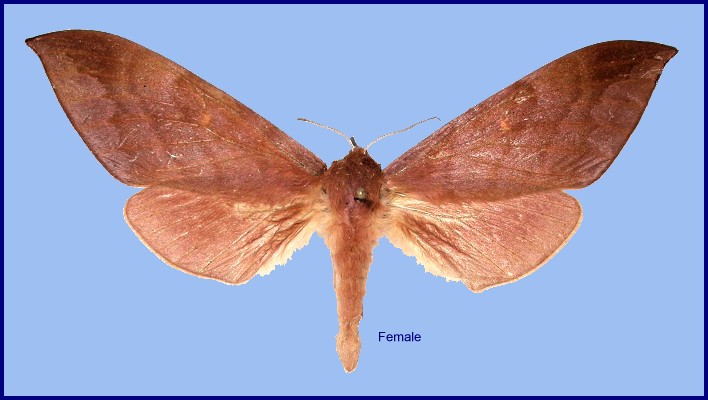
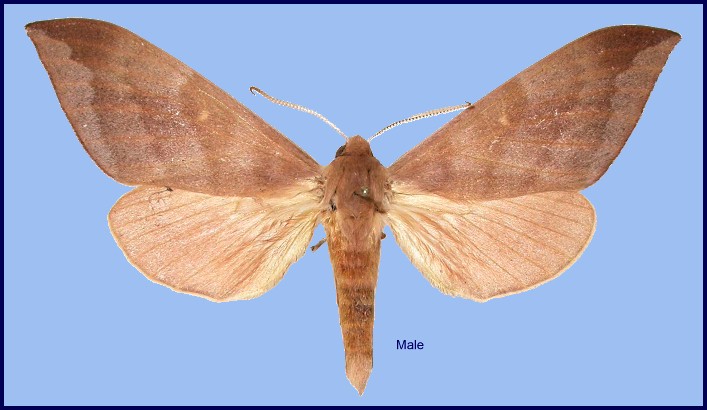
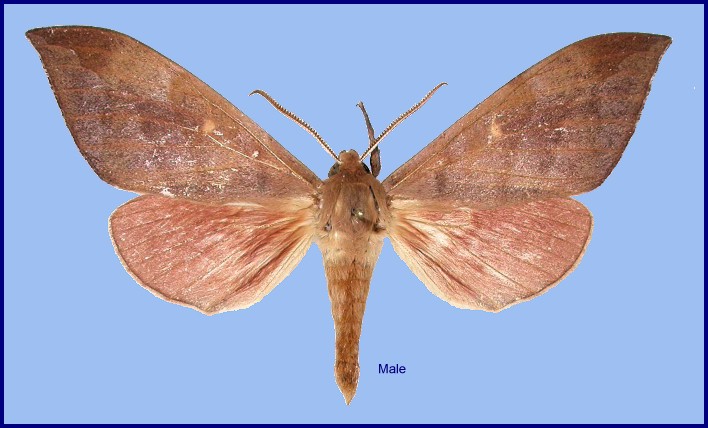
Rhodambulyx davidi Mell, 1939, Dt. ent. Z., Iris 52: 140. Type locality: [China,] north Fukien [Fujian], Kuatun [Guadun], 2300m, 27.40°N, 117.40°E.
Synonym. Rhodambulyx namvui Eitschberger & Nguyen, 2017.
Note. The genus was originally established for a single species, Rhodambulyx davidi Mell, 1939, described from Fujian, China, and which has since also been found in Guizhou, Hunan, Guangxi and Guangdong. Subsequently, four more species have been described: Rhodambulyx schnitzleri Cadiou, 1990 from Doi Inthanon, Chiang Mai, Thailand (also found in western Yunnan (Chen & Ou, 2008) and northern Laos); Rhodambulyx hainanensis Brechlin, 2001 from the Wuzhi Shan, Hainan (currently endemic to the mountains of Hainan Island); Rhodambulyx haxairei Melichar, Řezáč & Horecký, 2014 from the Ba Na Hills near Da Nang south to Lam Dong, Vietnam; and Rhodambulyx kitchingi Brechlin, 2015 (from the mountains of central Vietnam). In addition, Eitschberger & Nguyen (2017) described Rhodambulyx namvui from the border hills of northern Vietnam, but this was later synonymized with Rhodambulyx kitchingi by Eitschberger (2018) without stating any reasons for so doing (Xu, Melichar, He, Zhang, Zhang, Feng & Hu, 2022).
Varies in colour, with some being yellowish-brown, others reddish-brown.
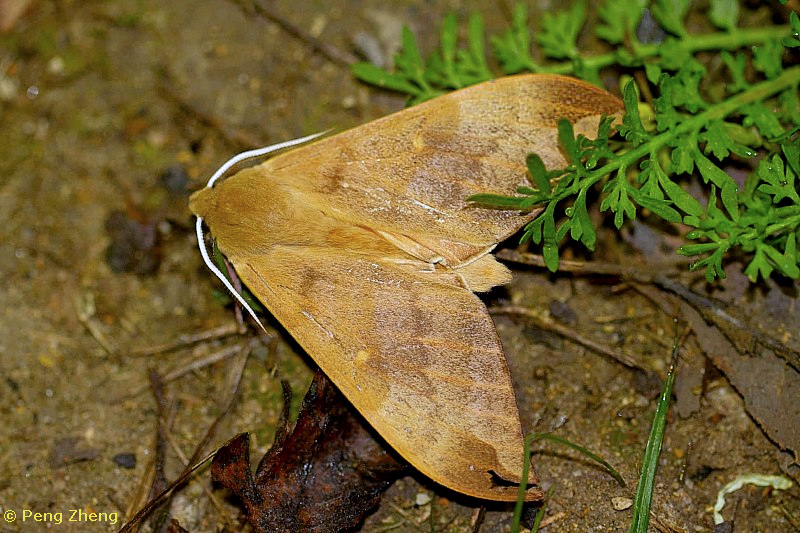
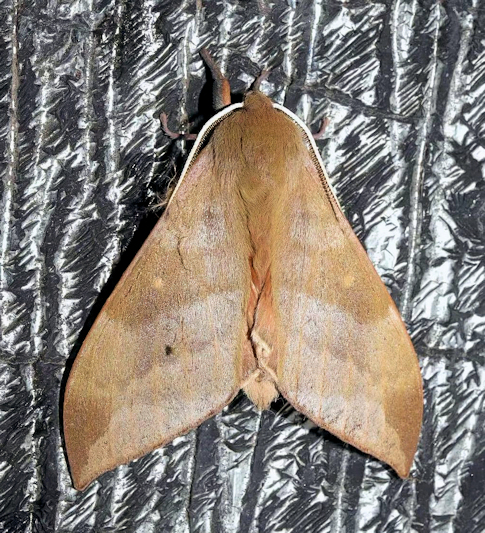
This species usually flies at altitude (1200-2300m) during spring in the isolated subtropical mountains of southern China. However, in March 2022 a male was captured at only 500m altitude on Mount Mandang above Nanping, Fujian (Peng Zheng, pers. comm 2022). Generally confined to wet, subtropical evergreen broad-leaved forests.
China: 18.ii (Shiliaohu, Fujian); iii (Guangxi; Jiangxi; Fujian); 4.iii-19.iv (Fujian); v (Guangxi).
OVUM: Illustrated and described in Liang, Lin, Wang, Cai, Liu & Chen, 2006 (as Ampelophaga rubigi).
LARVA: Illustrated and described in Liang, Lin, Wang, Cai, Liu & Chen, 2006 (as Ampelophaga rubigi). A canopy feeder. Sometimes common enough to defoliate whole trees, from which it may descend en-masse to pupate in soil near the base (KunYuan Li, pers. comm. 2023).
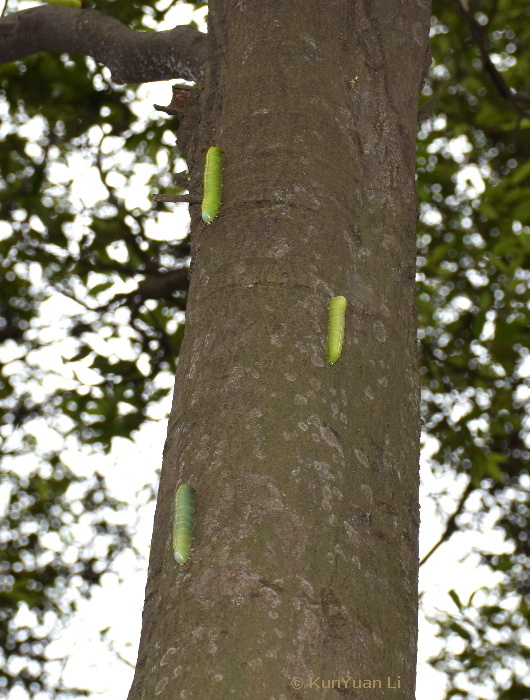
PUPA: Illustrated and described in Liang, Lin, Wang, Cai, Liu & Chen, 2006 (as Ampelophaga rubigi).
Larval hostplants. Chinese chinkapin (Castanopsis chinensis (Spreng.) Hance) (Liang, Lin, Wang, Cai, Liu & Chen, 2006.), a pioneer-dominant canopy tree in wet, subtropical evergreen broad-leaved forests distributed across southern China, northern Vietnam to Taiwan.
Unknown.
China: Guizhou (Shitou Shan, Rong Jiang (= river)); Hunan (Shunhuangshan National Forest Park); Jiangxi (Jingdezhen, 10m); Fujian (Guadun, Wuyi Shan, 2300m; Mangdang Shan, 500m; Longyan; Shiliaohu; Nanbeihu; Dawanggong); Guangxi (Jingxiu, Dayao Shan, 1200m); Guangdong (north).
Endemic to the mountains of southern China and border hills of northern Vietnam (Cao Bang, as 'namvui').
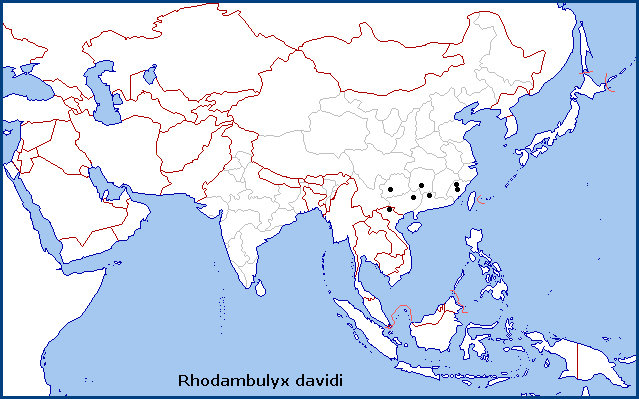
Unknown.
 Return to Sphingidae of the Eastern Palaearctic species list
Return to Sphingidae of the Eastern Palaearctic species list